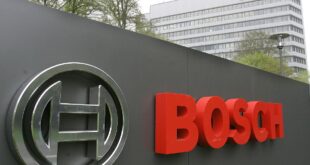Tesla shares fell despite recording the highest third-quarter delivery figures, as investors had expected more. Markets will now shift focus to the Robotaxi event and the upcoming earnings reports.
Tesla delivered 462,890 electric vehicles in the third quarter, marking a 6.4% year-on-year increase and a 4.2% sequential rise, returning to growth after two consecutive quarterly declines.
This figure is also the highest for the third quarter and the third-largest quarterly total in the company’s history.
However, Tesla’s delivery numbers missed the high expectations of the market. Analysts from Barclays and LSEG had forecast figures closer to 470,000, or an 8% annual increase, driven by a surge in sales in China.
Additionally, Tesla reported an energy storage deployment of 6.9 gigawatt-hours for the past three months, down from 9.4 gigawatt-hours in the second quarter but representing a 170% increase compared to the same quarter last year.
Following the news, Tesla shares fell as much as 6.4%, before paring losses and closing 3.5% lower at $249 (€225) on Wednesday.
Year-to-date, the US-based electric car maker’s shares are relatively flat, though they are up 78% from their year-low in April.
Tesla remains largest EV maker but faces growing competition
Tesla has been losing market share to rivals in both China and the US, resulting in a notable slowdown in growth.
The world’s largest EV maker reported a 7% annual decline in automotive sales in the second quarter, following an 8.5% drop in the first quarter.
Meanwhile, its price cuts have been eroding profit margins, which fell to 14.4% in the second quarter, down from 18.7% a year earlier.
In China, BYD and Geely are Tesla’s two biggest domestic competitors. Tesla outpaced BYD in battery electric vehicles (BEVs), reporting 443,426 deliveries in the third quarter.
However, BYD, the leading Chinese EV brand, focuses on hybrid models, which are cheaper and more popular among consumers. BYD alone sold 419,426 new energy vehicles (NEVs) in September, marking its fourth consecutive monthly sales record since March.
Tesla’s total deliveries in China from January to August amounted to 388,000, a 0.57% decline compared to the same period last year, according to CNevpost. BYD continued to dominate the Chinese NEV market with a 37% share, followed by Geely with 7.2%, and Tesla in third place with a 6.2% share – a slight increase from 5.27% the previous month.
In the US, GM reported a 60% year-on-year increase in electric car sales for the third quarter, while Ford’s electric vehicle sales rose 12% over the same period.
Although these five-digit delivery figures are not directly comparable to Tesla’s numbers, local competitors are intensifying the competition.
Tesla lost its position as the top EV seller in the US between April and June, with its market share falling to 49.7%, down from 59.3% a year earlier.
Robotaxi event and third-quarter earnings in the spotlight
Tesla typically releases its quarterly delivery and production figures about two weeks before its earnings report, scheduled for 23 October.
By then, markets will have digested the delivery numbers and will focus on other metrics such as overall sales revenue, net income, and profit margins.
Prior to the earnings report, Tesla is set to unveil its long-awaited Robotaxis, powered by Full Self-Driving (FSD) technology, on 10 October – a date rescheduled from the originally planned 8 August.
However, the event could negatively impact the share price if the unveiling disappoints investors.
Tesla aims to launch FSD in China and Europe by the first quarter of 2025, subject to regulatory approval.
During the second-quarter earnings call, Elon Musk suggested the company could secure approval by the end of this year.
 topnaijanews Stay informed with the latest Nigerian news at your fingertips
topnaijanews Stay informed with the latest Nigerian news at your fingertips
